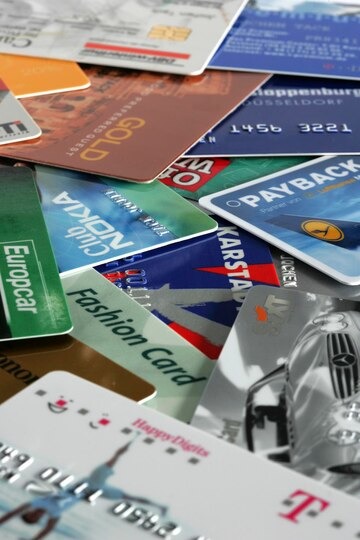Credit cards have become an integral part of financial life in the United States, providing convenience, security, and a way to build credit. For many, they are a tool for managing expenses, while for others, they can lead to debt if not handled wisely. This article aims to provide an in-depth look at credit cards in the USA, covering how they work, the different types available, their benefits and risks, and tips for responsible usage.
How Credit Cards Work
At its core, a credit card is a financial tool that allows consumers to borrow money from a lender, usually a bank or credit union, to make purchases. When you use a credit card, you’re essentially taking a loan from the card issuer that you promise to pay back, typically within a grace period to avoid interest charges.
Key Components of Credit Cards
- Credit Limit: This is the maximum amount you can borrow on your card. It is determined by the issuer based on factors like your credit score, income, and payment history.
- Annual Percentage Rate (APR): This is the interest rate charged on any outstanding balance you carry beyond the due date. APRs can vary significantly based on your creditworthiness.
- Grace Period: This is the time frame during which you can pay off your balance in full without incurring interest charges. Typically, this period ranges from 21 to 25 days after the billing cycle ends.
- Fees: Credit cards may come with various fees, including annual fees, late payment fees, and foreign transaction fees. Understanding these charges is crucial for managing costs effectively.
Types of Credit Cards
In the USA, there are several types of credit cards designed to meet different needs:
1. Standard Credit Cards
These are the most common types of credit cards. They allow users to make purchases, and payments can be carried over from month to month. Standard credit cards may have an annual fee, but many also offer rewards.
2. Rewards Credit Cards
These cards offer points, miles, or cash back for every dollar spent. Rewards can often be redeemed for travel, merchandise, or statement credits. Popular examples include cash-back cards and travel rewards cards.
3. Secured Credit Cards
Designed for individuals with no credit or poor credit, secured credit cards require a cash deposit that serves as collateral. This helps mitigate the risk for the lender and can be a stepping stone to obtaining unsecured credit cards.
4. Student Credit Cards
These cards are tailored for college students who may be new to credit. They often come with lower credit limits and less stringent approval criteria, helping students build their credit history.
5. Business Credit Cards
Geared toward small business owners, these cards offer benefits like expense tracking and rewards for business-related purchases. They often come with features that cater specifically to business needs.
Benefits of Using Credit Cards
- Building Credit History: Responsible use of credit cards can significantly enhance your credit score. Timely payments and low credit utilization contribute positively to your credit history.
- Rewards and Incentives: Many credit cards offer rewards programs that can provide valuable perks, from cash back to travel discounts.
- Emergency Funds: Having a credit card can serve as a financial cushion in emergencies, allowing you to make necessary purchases even if you don’t have immediate cash on hand.
- Fraud Protection: Credit cards often offer better fraud protection than debit cards. Most issuers have zero-liability policies that protect you against unauthorized transactions.
- Convenience: Credit cards are widely accepted and can be used for online purchases, travel bookings, and more, making them a convenient payment method.
Risks and Drawbacks
While credit cards offer numerous benefits, they also come with risks that consumers need to be aware of:
- Debt Accumulation: Mismanaging credit cards can lead to high levels of debt, especially if you only make minimum payments. High-interest rates can quickly escalate the amount owed.
- Impact on Credit Score: Late payments, high credit utilization, or applying for multiple cards can negatively impact your credit score, making it harder to secure loans in the future.
- Fees and Charges: Many credit cards have hidden fees, such as late payment fees or foreign transaction fees, which can add up quickly if you’re not careful.
- Impulse Spending: The ease of using credit cards can lead to impulsive purchases, which may result in spending beyond your means.
Tips for Responsible Credit Card Usage
To enjoy the benefits of credit cards while minimizing risks, consider the following tips:
- Pay Your Balance in Full: Whenever possible, pay off your balance in full each month to avoid interest charges and debt accumulation.
- Set a Budget: Create a monthly budget that includes your credit card expenses. Stick to it to ensure you don’t overspend.
- Monitor Your Statements: Regularly check your credit card statements for any unauthorized transactions or discrepancies.
- Choose the Right Card: Research different cards to find one that suits your lifestyle and spending habits. Consider factors like rewards, fees, and interest rates.
- Keep Credit Utilization Low: Aim to use less than 30% of your available credit to maintain a healthy credit score.
Conclusion
Credit cards are powerful financial tools that can enhance your purchasing power and help you build credit. However, they also require responsible management to avoid potential pitfalls. By understanding how credit cards work, exploring the various types available, and following best practices for usage, you can leverage the benefits of credit cards while minimizing risks. Whether you’re looking to earn rewards, build credit, or simply enjoy the convenience of cashless transactions, informed credit card use can pave the way for a more secure financial future.
You can also read this ↓

